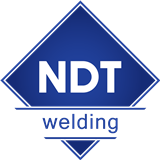The role of a welding inspector begins well before welding starts, continues throughout the welding process, involves a series of post-weld activities, and concludes only after the proper documentation of the results. As an integral part of the quality system, inspection activities are defined in the inspection and test plan, which clearly outlines all requirements. In many cases, the inspector is also responsible for preparing documentation that ensures traceability of individual components and the corresponding manufacturing activities.
Before welding begins, the inspector must ensure that the appropriate materials are being used and that the shop has approved the welding procedure and qualified welders accordingly. Written procedures and competent operators are essential for producing high-quality welded components, but the actual execution of the weld is also critically important for the inspector. Once the inspector verifies that everything is in order and welding can commence, their task becomes monitoring and oversight. At this stage, the inspector must focus on two key aspects: ensuring adherence to written procedures and identifying any physical signs of potential defects in the product.
The inspector’s responsibilities include verifying the base metal and welding consumables, ensuring correct fit-up and joint preparation, and monitoring the welding operation itself. Upon completion of welding, a subsequent series of inspection activities is carried out. This begins with executing the inspection program in accordance with the approved procedure, overseeing the inspection process and quality control, and selecting specific welds for further non-destructive testing or mechanical testing.
Heat treatment (preheating, interpass heating, or post-weld heat treatment) can be a critically important parameter in welding production, and it is often the inspector’s responsibility to ensure it is carried out properly. Heat treatment must be performed in accordance with approved written procedures. To ensure reliable results, the inspector must have sufficient knowledge of the relevant technology, equipment, and reporting requirements.






